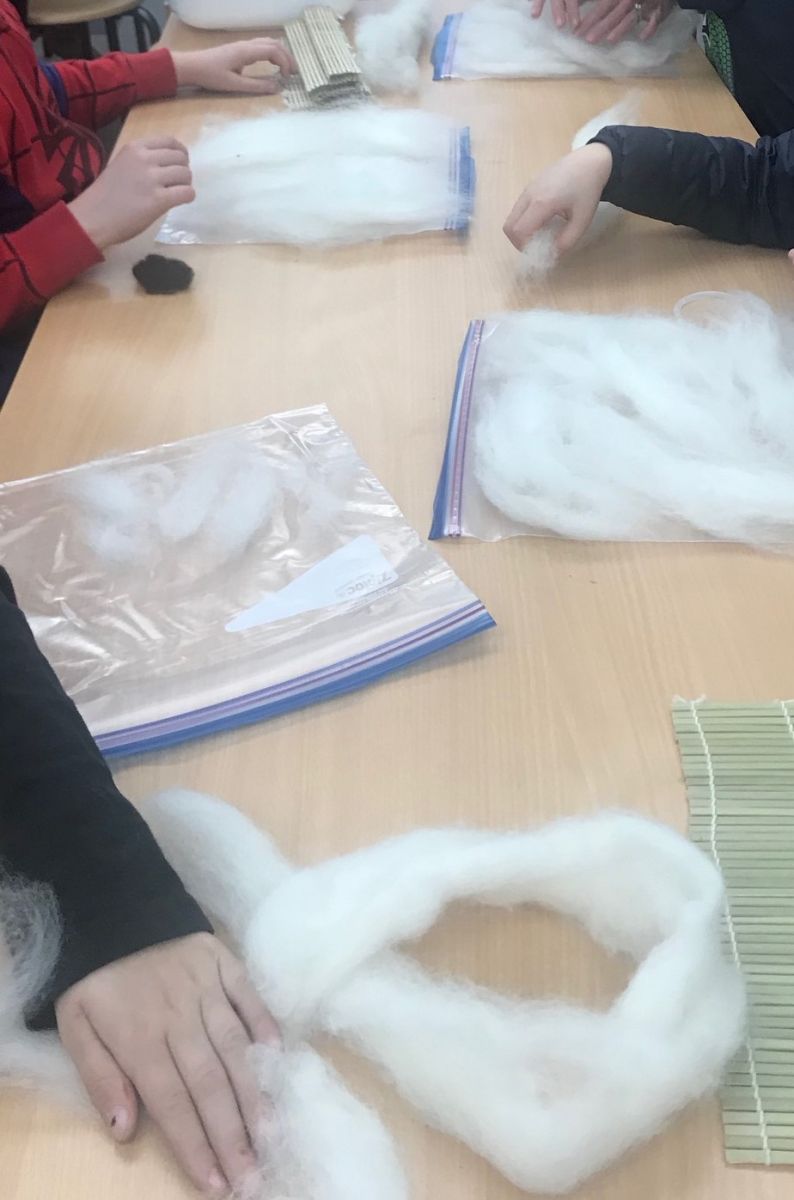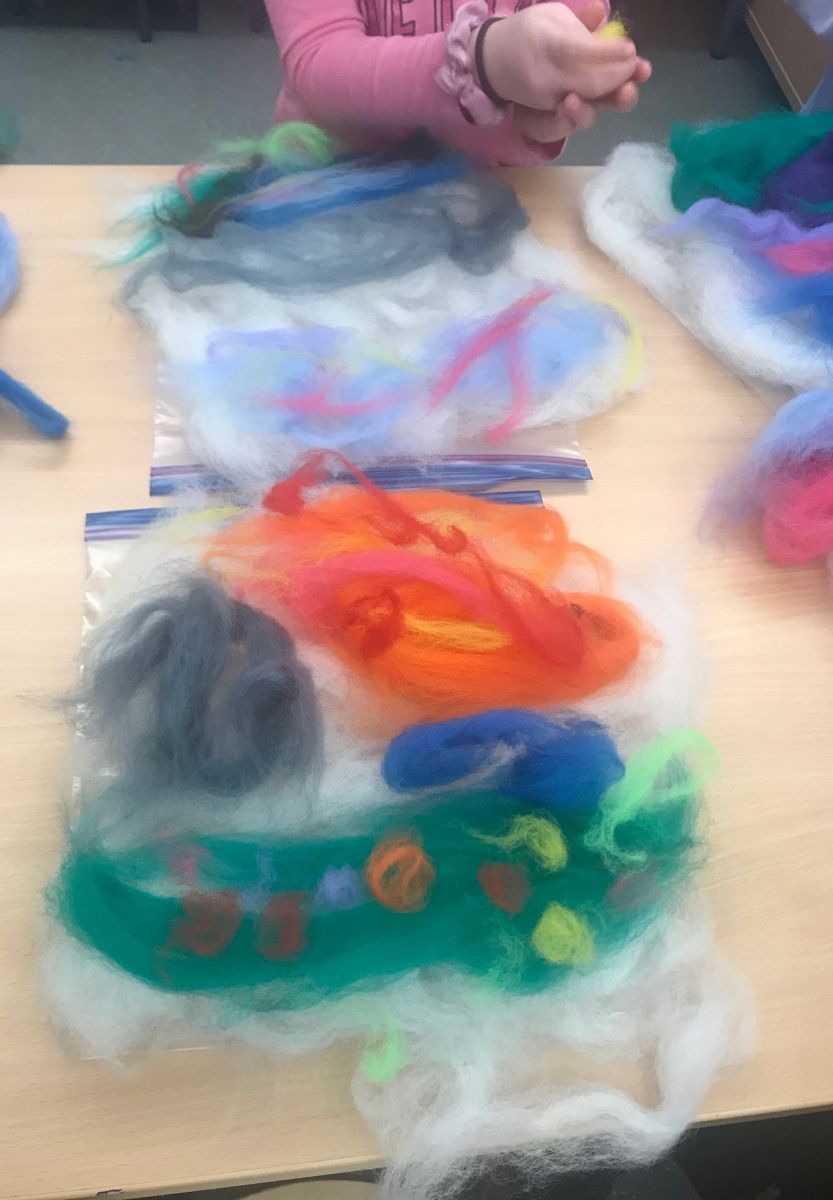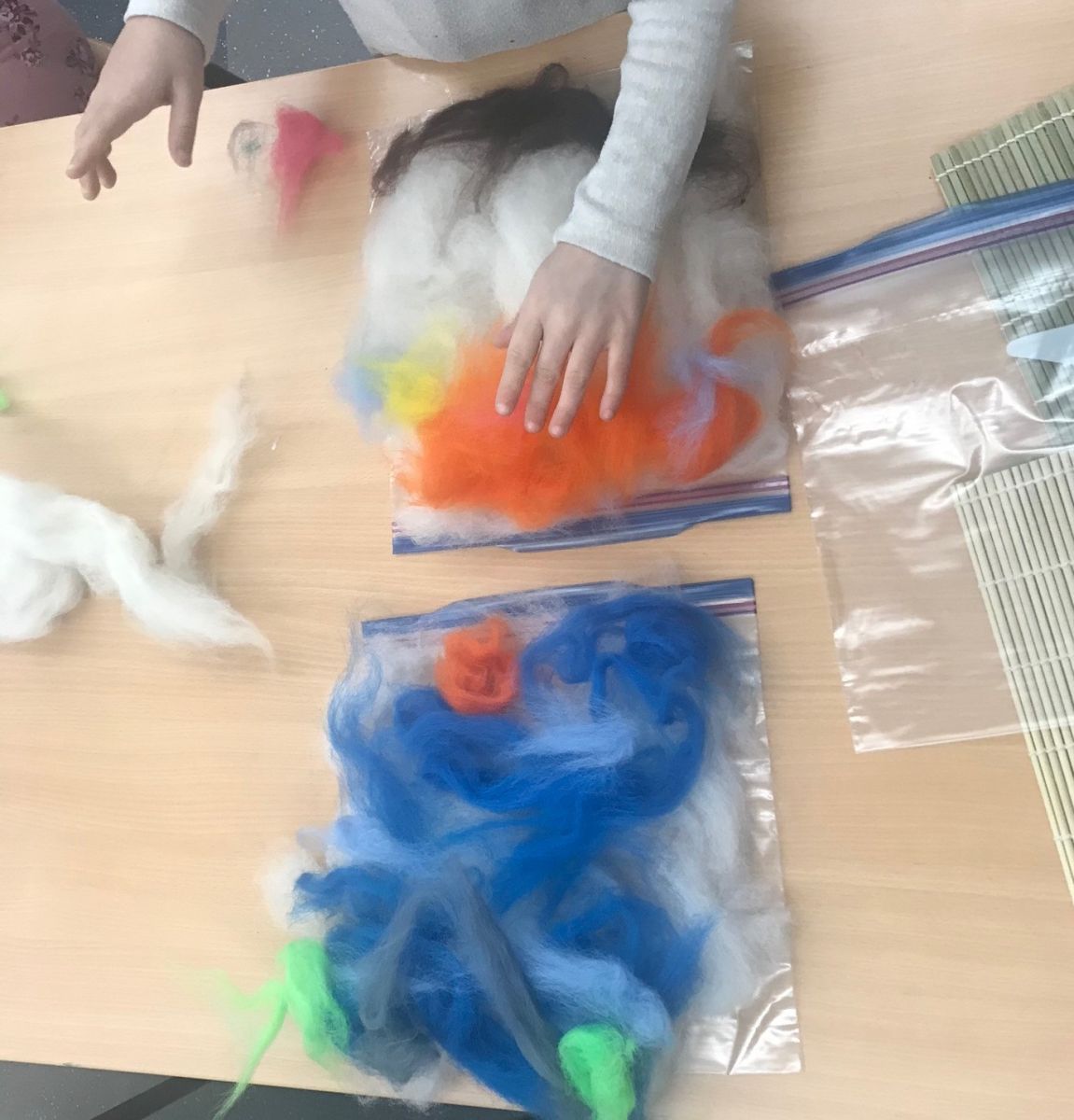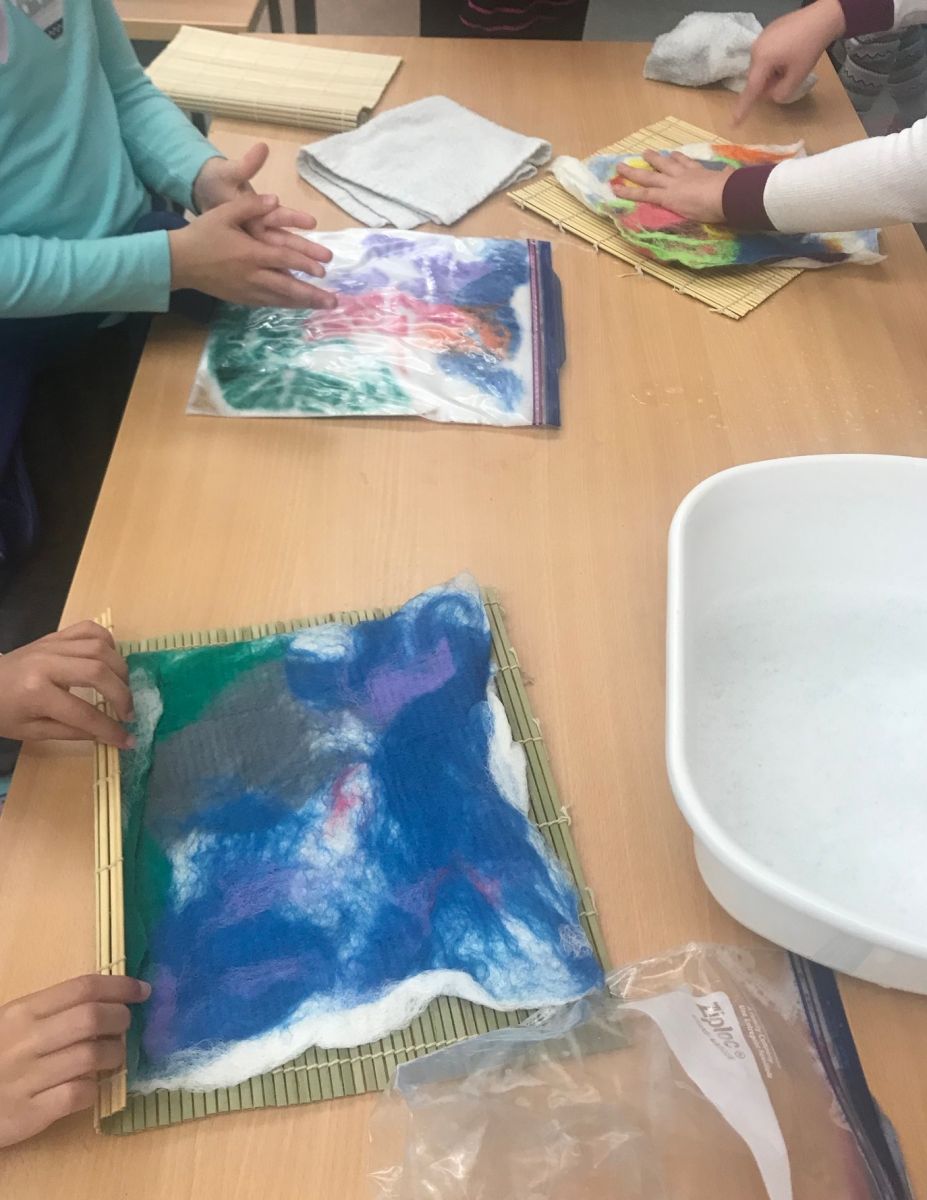Students will learn about Impressionism, observe works by various artists, then create a landscape by felting wool roving. Recommended for 4th Graders.
Texture: used to describe the way a work feels when touched or may refer to the visual "feel" of a piece. Some words to describe texture are: rough, smooth, coarse, soft, gritty, prickly, and slick.
Unity: achieved when the components of a work of art are perceived as harmonious, giving the work a sense of completion.
Felting: becoming permanently matted or entangled.
Impressionism: Impressionism began in France when a group of young and talented artists decided to form a new style of painting. Impressionists wanted to capture a moment in time. Critics said that their work was merely "impressions" of reality and the name stuck.
Wool: the fine, soft curly or wavy hair forming the coat of a sheep, goat, or similar animal which is used to make yarn and cloth.
Wool Scales: the exposed edges of the cuticle cells pointing towards the tip of a fiber (hair), creating a jagged edge. Fibers cross and slip over one another giving wool the ability to felt.
Impressionism was a style of painting developed in the late 1800’s which featured the changing effects of light and time on everyday subjects. This was a reaction to the development of the camera which could capture the actual details of a situation at a specific moment in time. This forced or gave the opportunity for artists to change how and what they were capturing from traditional realism to many new forms of art. Impressionism used the “new” found science of color theory (how our eyes perceive color) to explore other ways to create images.
This is a wet process. So, work in an area where getting the floor wet won’t be a problem.
Weigh white roving and roll into balls .5oz per student. This will be used as the background layer for the landscape.
Find Impressionistic landscape images by Claude Monet, Vincent van Gogh, Pierre Renoir and Mary Cassatt to show students.
What is impressionism?
How is an impressionistic artwork different far away than up close?
What is a landscape? What will you find in a landscape?
Where did this amazing bag of brightly colored wool come from?
What is a felted textile?
Students have created a felted landscape using layers of colored roving to create an image.
Students can describe how their felted work is like Impressionistic artwork. (individual brushstrokes/pieces of roving combine to create an image).
Students can describe how an Impressionistic artwork is different than traditional realism.
I can create my own a landscape “painting” by using the wet felting technique.
Set Up:
Have pre-weighed balls of white roving .5oz per student ready to hand out.
Prepare a dry bin with different colored roving. One per table
Prepare one pitcher with very warm soapy water and one with fresh very warm water.






Lesson written by Elizabeth Jackson.
21st Century Thinking Skills
Observing, cause and effect, creating.
Students will use visual observation, visualization and decision-making skills by observing impressionistic landscape paintings and then create their own landscape made from the wool felting technique.
WA State Learning Standards
(VA:Cr1.1.4) Brainstorm multiple approaches to a creative art or design problem.
(VA:Cr1.2.4) a. Collaboratively set goals and create artwork that is meaningful and has purpose to the makers.
(VA:Cr2.2.4) When making works of art, utilize and care for materials, tools, and equipment in a manner that prevents danger to oneself and others.
Arts Integration Opportunities
Color theory in science.
Please note: These lesson plans are intended for non-profit use only. Use of these plans for commercial purposes should give attribution to the Issaquah Schools Foundation and be accompanied by a nominal donation at www.isfdn.org/donate. Thank you.
Fueling Success for Every Student, Every School